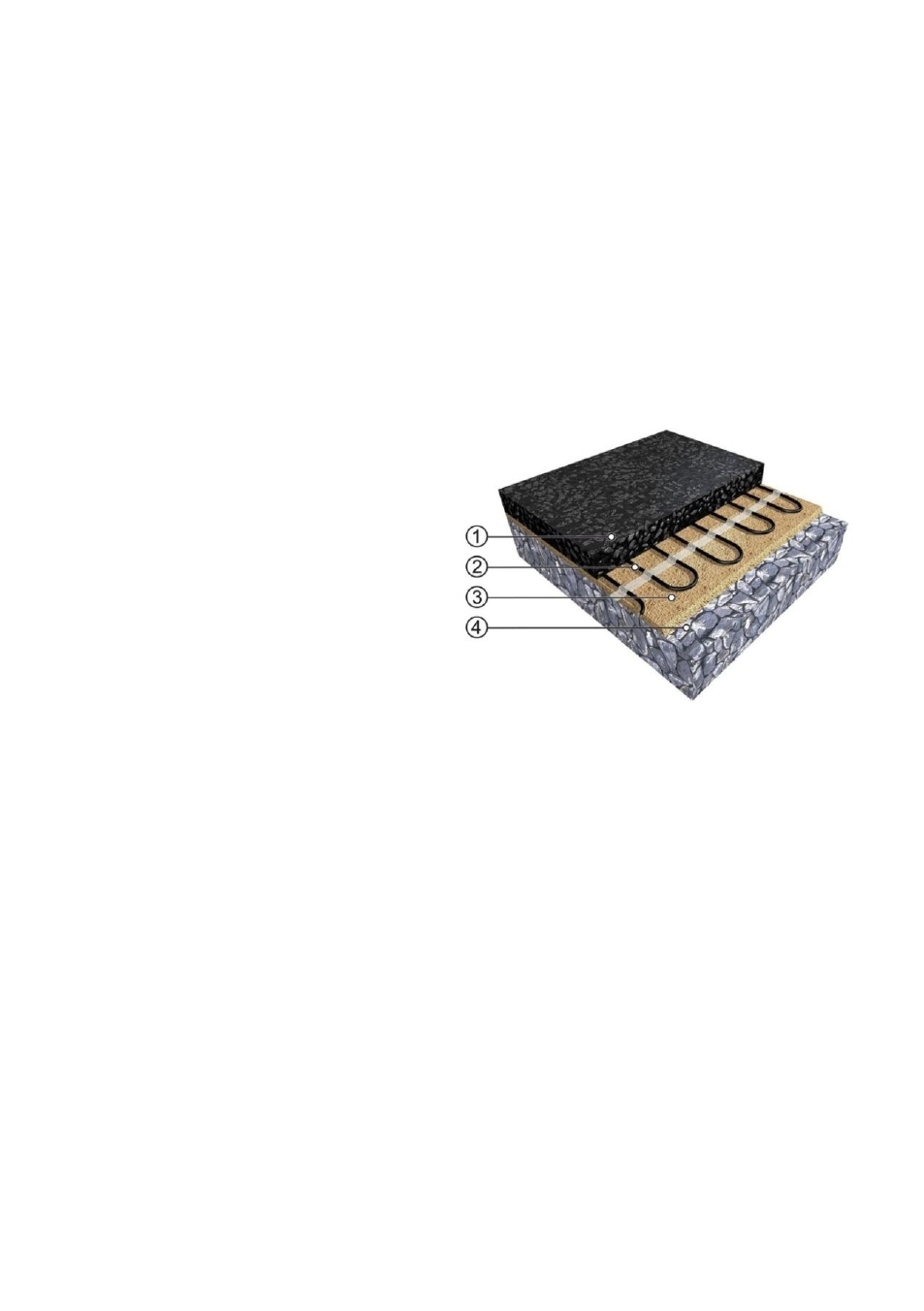C) installation in asphalt, D) installing into fine washed sand, Installation in asphalt – Fenix MADPSP 40 W/m User Manual
Page 7

c) Installation in asphalt
It is possible to place MADPSP cables directly into asphalt providing that the pattern shown in figure
2 is complied with.
The temperature of the asphalt which is in contact with the cable must not exceed 240°C for period of
30min.
The asphalt layer shall be placed on the cable manually. Layer compaction shall be carried out by a
manual vibrating plate or by a road roller.
In case of installation over a large area, it is necessary to lay the first layer onto the cable manually and
to compact the layer manually, too. Only the next layer may be laid by heavy machinery.
If you intend to heat just the drive-strips of the total asphalt surface, we recommend placing a gravel
base layer in the places intended for heating (stone grading 0 - 4mm), or place a geo-textile fabric
underneath. However, we do not recommend this procedure for larger applications.
Installation in asphalt
1) Asphalt layer 5 — 10cm
2) MADPSP heating cable
3) Fine gravel or sand 2 — 3cm
4) Compacted base layer
d) Installing into fine washed sand
Procedure (suitable only for use under pedestrian sidewalks)
Create a compact underlying layer of gravel 150–300 mm thick. This can be regarded as the thermal
insulation.
You can find information about the effect and importance of high quality thermal insulation (e.g. on
the basis of extruded polystyrene) on the FENIX internet pages – category ECOFLOOR/Outdoor
applications, or you can consult a technician regarding its use
Cover the gravel layer with compact sand 5 cm thick.
Place the heating cable in an open-looping pattern in accordance with the required output. Use Grufast
fastening strips to fix the cable.
Measure the resistance of the heating circuit and the insulation resistance and record the measured
values in the certificate of warranty.
Draw the scheme of the heating cable layout in the certificate of warranty.
Cover the heating cable with a 5 cm layer of sand, then place the tiles.
Measure the resistance of the heating circuit and the insulation resistance again and record the
measured values in the certificate of warranty.